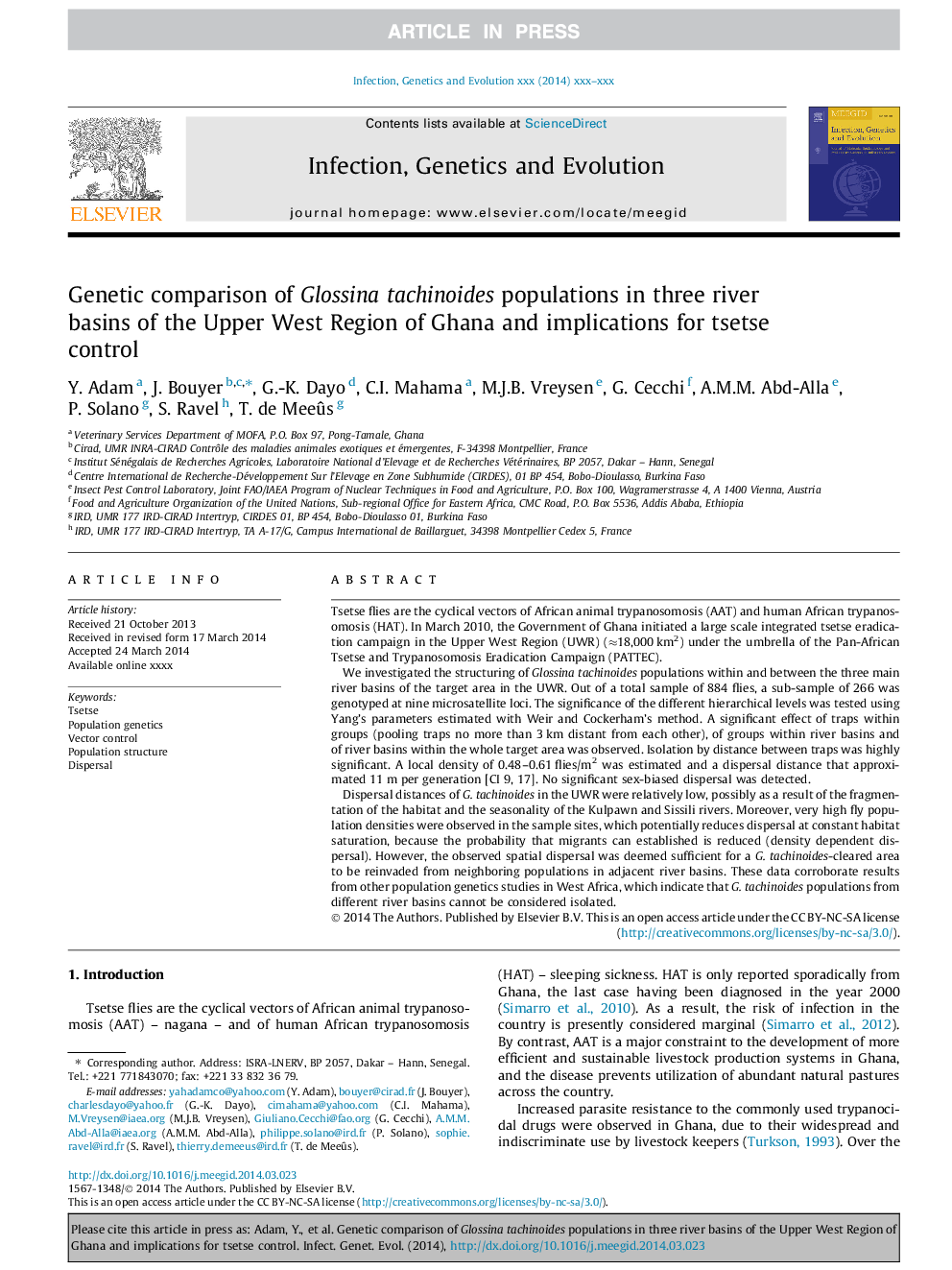| Article ID | Journal | Published Year | Pages | File Type |
|---|---|---|---|---|
| 5909556 | Infection, Genetics and Evolution | 2014 | 8 Pages |
Abstract
Dispersal distances of G. tachinoides in the UWR were relatively low, possibly as a result of the fragmentation of the habitat and the seasonality of the Kulpawn and Sissili rivers. Moreover, very high fly population densities were observed in the sample sites, which potentially reduces dispersal at constant habitat saturation, because the probability that migrants can established is reduced (density dependent dispersal). However, the observed spatial dispersal was deemed sufficient for a G. tachinoides-cleared area to be reinvaded from neighboring populations in adjacent river basins. These data corroborate results from other population genetics studies in West Africa, which indicate that G. tachinoides populations from different river basins cannot be considered isolated.
Related Topics
Life Sciences
Agricultural and Biological Sciences
Ecology, Evolution, Behavior and Systematics
Authors
Y. Adam, J. Bouyer, G.-K. Dayo, C.I. Mahama, M.J.B. Vreysen, G. Cecchi, A.M.M. Abd-Alla, P. Solano, S. Ravel, T. de Meeûs,
